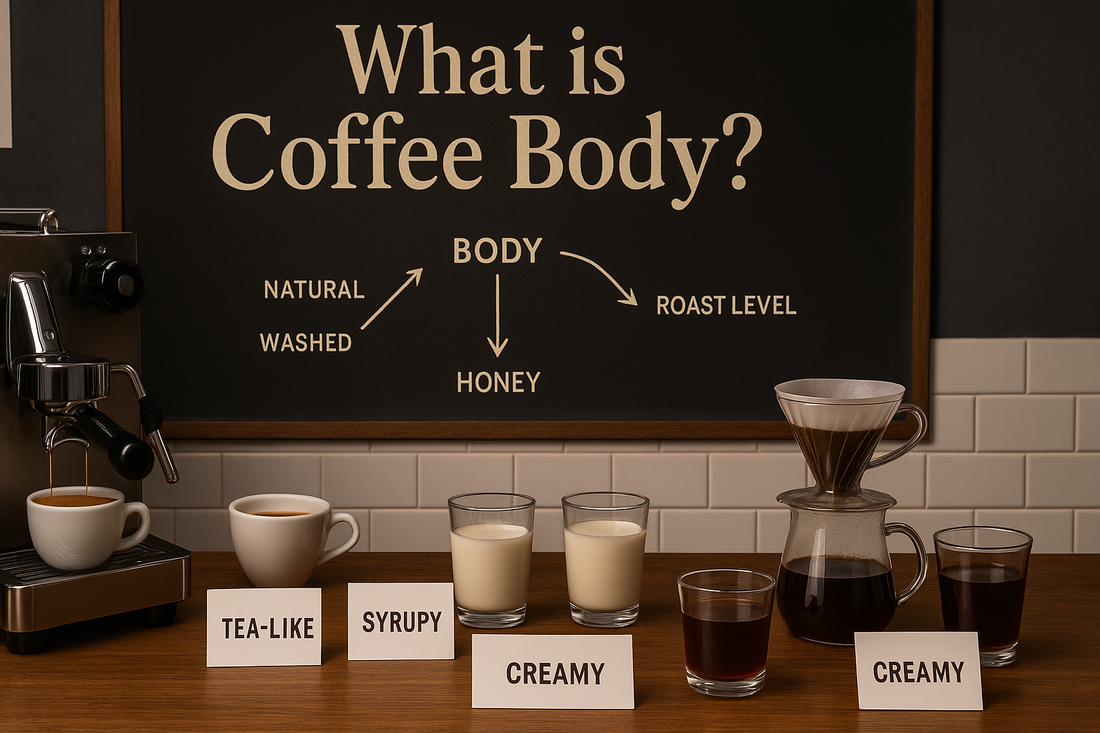
What is Coffee Body?
正啟 GLOBALEYESShare this news
Coffee expert Scott Rao, in his acclaimed book The Professional Barista’s Handbook, defines body as “the sense of weight or fullness perceived in the mouth when drinking a beverage.”

When coffee enters the mouth, we gently glide our tongue across the palate to sense its texture, analyzing the smoothness, and then use the back of our tongue to assess its weight and fullness. We discern if it’s tea-like in lightness or syrupy in thickness, evaluating viscosity and depth. Our description of this sensation might range from "light-bodied" to "full-bodied."

Occasionally, people mistakenly equate body with bitterness. In fact, strong bitterness does not necessarily indicate a heavier body. The body does not represent a specific flavor but rather a complex interplay of several factors. Therefore, there is no absolute measurement for coffee body, and multiple elements influence it.

Factors Influencing Coffee Body
What constitutes a "light-bodied" coffee compared to a "full-bodied" one? Actually, various elements such as coffee bean varieties, processing methods, roasting levels, blending choices, and brewing techniques all significantly influence body.

How Processing Methods Affect Body
Take processing methods as an example:
- Natural (Sun-dried) coffees typically have a rich, full body.
- Washed coffees often yield a cleaner, lighter body.
- Honey-processed coffees generally produce a more syrupy, jam-like body.
- Wet-hulled coffees, unique to Indonesia, commonly exhibit herbal or woody notes, less acidity compared to washed or natural methods, but a noticeably increased body.

Since evaluating body is subjective (like flavor assessment), it is helpful to taste multiple coffees with different processing methods simultaneously to strengthen one's ability to distinguish differences in body.
Roasting Level and Coffee Body
From a roasting perspective, acidity usually peaks early and begins to diminish significantly after reaching a medium roast. In contrast, body increases as roasting progresses and tends to rise rapidly from medium roast onward.

If a bean's acidity is particularly outstanding, roasters might prefer a lighter to medium roast level, deliberately sacrificing some body to achieve balance. Occasionally, roasting is intentionally extended to enhance body, compensating for certain flavor deficiencies.

Interestingly, although body typically increases with roasting depth, when coffee reaches very dark roasting levels, the body might paradoxically feel thinner. This is because body usually peaks at medium-dark roast levels and then gradually diminishes with further roasting. Therefore, perceiving a thinner body in darker or very dark roasts is natural.

Brewing Methods and Coffee Body
Different brewing techniques produce varying perceptions of coffee body:
- Coffees with heavier bodies generally exhibit more complex and intense flavors.
- Lighter-bodied coffees typically have clearer and more straightforward flavor profiles.

In normal circumstances, espresso demonstrates a noticeably heavier body compared to pour-over coffee. Espresso brewed under nine bars of pressure creates crema, intensively extracting coffee substances. Concentrating flavors in a small espresso cup significantly enhances fullness and viscosity.

On the other hand, pour-over coffee uses a higher water-to-coffee ratio, unraveling tightly intertwined flavors across a broader spectrum. This allows drinkers to appreciate clear distinctions between flavor characteristics at various tasting stages, providing more opportunities to discern specific acidity (e.g., distinguishing different citrus notes) and to evaluate nuances of body—such as tea-like delicacy, sugary sweetness, honey-like silkiness, syrupy viscosity, or creamy mouthfeel.

Understanding coffee body thus offers a deeper appreciation of the myriad sensations coffee can deliver, enhancing the overall tasting experience.
